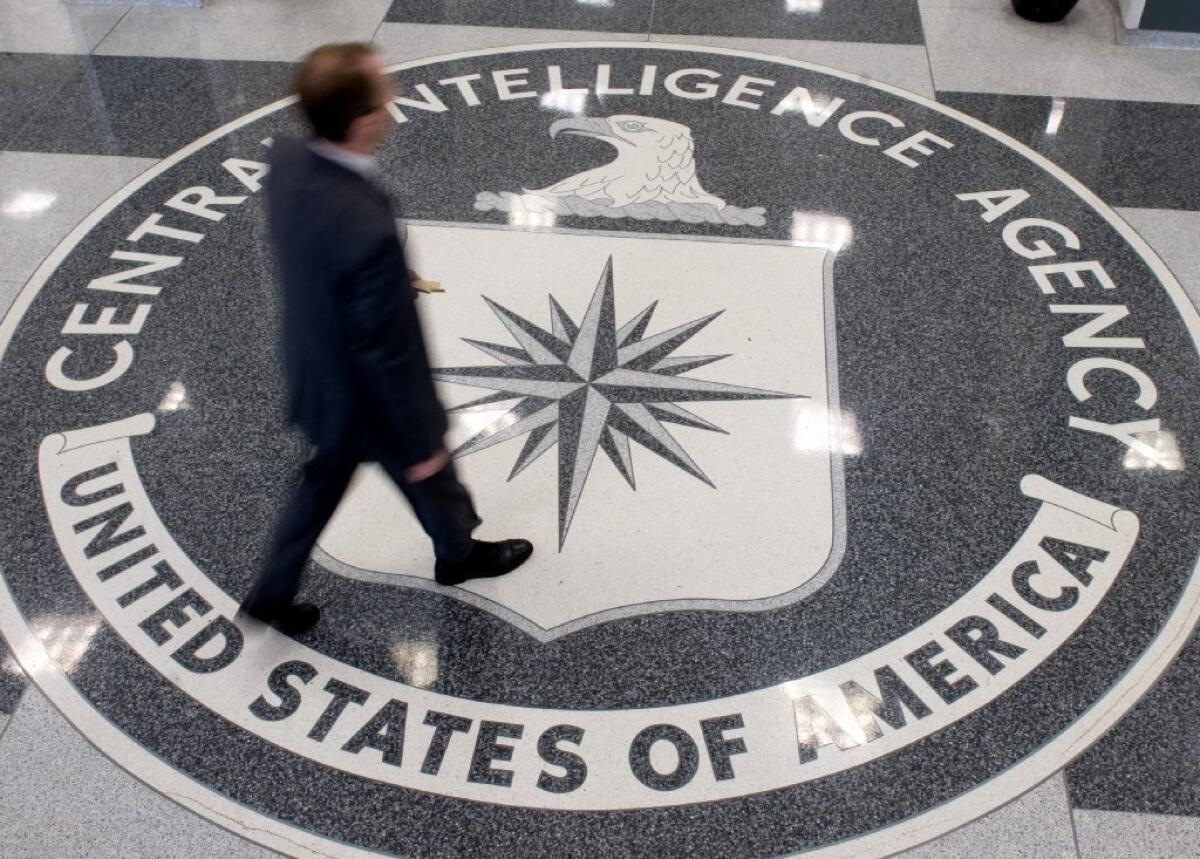Op-Ed: Robert Ames and the CIA’s history of back-channel talks with ‘the bad guys’

- Share via
When reports surfaced in Washington this month that the Obama administration has been holding secret back-channel talks with Hamas over the last six months, the denials came swiftly. “These assertions are completely untrue,” proclaimed State Department spokeswoman Marie Harf. “As you all know, Hamas is a designated foreign terrorist organization.... Per long-standing U.S. policy, we do not have any contact with Hamas.”
Let’s hope that’s not true. The CIA has always dealt with bad guys, and it’s essential it keeps doing so. Why? Because bad guys know a lot more about what other bad guys are doing than good guys ever will.
That is a classic story line from the annals of intelligence. In 1969, Robert Ames, a 35-year-old CIA clandestine officer, developed a back channel with Ali Hassan Salameh, a young Palestinian who served as the bodyguard and, virtually, an intelligence officer for Yasser Arafat’s Palestine Liberation Organization. At the time, the PLO was branded as a terrorist entity and the Nixon administration’s national security advisor, Henry Kissinger, had solemnly promised Israeli officials that Washington would have no contact with the PLO. It was called the “Kissinger Rule.” In 1979, Andrew Young was forced to resign as ambassador to the United Nations for meeting with a PLO official in New York.
But Ames met regularly with Salameh for a decade, with the full knowledge and encouragement of CIA Director Richard Helms. Kissinger also knew about the back channel, and he never tried to shut it down, precisely because he understood its intelligence value. The simple fact of the back channel has been reported on over the years by Doyle McManus of the Los Angeles Times and David Ignatius of the Washington Post. In research for a book, I was able to find how deep this relationship between Ames and Salameh went.
“You sup with the devil,” one clandestine officer told me, “but you use a long spoon.” Ames actually used a short spoon. He befriended Salameh and his wife Nashrawan and dined at their apartment every other evening when visiting Beirut. When Salameh fell in love with Georgina Rizk — crowned Miss Universe in 1971 — Ames quietly disapproved: “Why he still has this thing going with the other [woman], I’ll never know.” Ames thought, “This affair is ruining his reputation.” But when Salameh requested it, Ames quietly arranged for him and his beauty queen to visit Disneyland and Hawaii, escorted by a CIA officer. Clearly, the CIA was going to extraordinary lengths to cultivate a man they regarded as an invaluable intelligence source.
This clandestine relationship was a two-way street. Salameh was trying to persuade Washington to deal with and recognize the PLO. And Ames was trying to glean intelligence from the Palestinian about assassins like Abu Nidal. But Ames was also using his friendship with Salameh to coax the Palestinian — and the “Old Man” (Arafat) — to lay down their guns and move toward a political solution that would meet Palestinian aspirations. Later in the relationship, the agency was even providing training to the PLO’s Force 17 security group, which was in turn protecting the U.S. Embassy in Beirut in the midst of the Lebanese civil war.
Ames is still unknown to most Americans, but inside the CIA he’s a legend. “Everyone credited Ames with getting the peace process started,” said a retired CIA analyst. Ames got the Americans talking to the Palestinians, and eventually this helped lead to the Palestinians talking with the Israelis.
But it was a hard road. The Israelis kept trying to kill Salameh. They associated him with PLO offshoot Black September’s horrific operation at the 1972 Munich Olympics, in which 11 Israeli athletes were killed. But the Israelis also knew Salameh was the CIA’s back channel to the PLO, and they feared it would lead someday to Arafat standing on the White House lawn (as he ultimately did). So on Jan. 22, 1979, a Mossad team assassinated Salameh in Beirut with a car bomb.
Ames was stunned when he heard the news. “If Ali Hassan had lived,” recalled Sam Wyman, another clandestine CIA officer, “things might have gone in a different direction.”
Ames himself was killed in the April 18, 1983, truck bomb attack on the U.S. Embassy in Beirut that killed 16 other Americans and 46 Lebanese civilians. The peace process he initiated more than three decades ago remains stymied. But his career as a clandestine intelligence officer is a reminder that billions of dollars worth of intercept intelligence is no substitute for old-fashioned human intelligence. Ames spent years learning Arabic and studying the history and cultural intricacies of a very foreign society. He could cultivate a relationship with someone like Salameh only because he truly empathized with the Middle East, its language, its rhythms and its deep sense of history and place.
Since 9/11, the CIA has invested heavily in paramilitary operations and technical intelligence, leaving proportionally fewer resources and time available to cultivate intelligence officers of the caliber and sensibility of a Robert Ames. Does the CIA today have anyone capable of nurturing a friendship with a high-ranking Hamas operative? Perhaps. But I fear not. And if so, that can only be another intelligence failure.
Kai Bird is a Pulitzer Prize-winning historian and the author most recently of “The Good Spy: The Life and Death of Robert Ames.”
More to Read
A cure for the common opinion
Get thought-provoking perspectives with our weekly newsletter.
You may occasionally receive promotional content from the Los Angeles Times.









